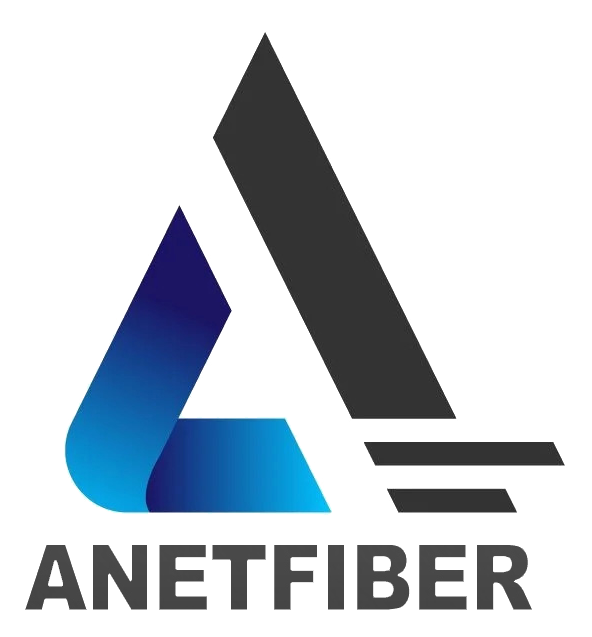Essential Fiber Optic Cable Troubleshooting and Maintenance Tips

Understanding Fiber Optic Basics
Fiber optic technology has revolutionized data transmission and communication systems, offering unparalleled efficiency and reliability. Fiber optic cables are designed to transmit data using pulses of light, making them a standout choice for high-speed internet, telecommunication networks, and cable television systems.
What Makes Fiber Optic Special?
The role of light in data transmission
Unlike traditional copper cables that rely on electrical signals to transmit data, fiber optic cables utilize light signals for the same purpose. This unique characteristic allows for rapid data transfer over long distances without any signal degradation.
Advantages over traditional cables
The use of light in fiber optic technology provides several advantages over conventional wiring systems. These include higher bandwidth capacity, immunity to electromagnetic interference, and enhanced security due to the inability to tap into the transmitted light signals.
Key Components of Fiber Optic Cables
Core, cladding, and coating
Fiber optic cables consist of a core through which the light travels, surrounded by a cladding layer that ensures the light remains trapped within the core through total internal reflection. Additionally, a protective outer coating shields the delicate fibers from environmental factors.
Types of fiber optic cables
There are various types of fiber optic cables designed to cater to specific application needs. Single-mode fibers are ideal for long-distance transmissions, while multi-mode fibers are suitable for shorter distances and high-speed data transfers within localized areas.
Identifying Common Fiber Optic Issues
Fiber optic technology, while highly efficient, is not immune to issues that can affect its performance. Understanding common problems and their troubleshooting methods is essential for maintaining a reliable network.
Signal Loss Troubleshooting
Causes of signal loss
Signal loss in fiber optic cables can occur due to various factors, including bending or twisting of the cable beyond its minimum bend radius, contamination at connector points, or excessive stretching of the cable during installation.
Identifying symptoms of signal loss
Symptoms of signal loss in fiber optic cables may manifest as reduced data transfer speeds, intermittent connectivity issues, or complete loss of signal transmission. It is crucial to monitor signal strength and quality regularly to detect any potential losses.
Fiber Optic Attenuation and Its Impact
What is fiber optic attenuation?
Fiber optic attenuation refers to the reduction in signal strength as it travels through the fiber optic cable. This phenomenon can lead to decreased data transmission rates and compromised network performance.
Factors contributing to attenuation
Several factors contribute to fiber optic attenuation, including impurities in the fiber material, excessive cable length, and environmental conditions such as temperature fluctuations and exposure to moisture. Identifying and addressing these factors is crucial for minimizing attenuation-related issues.
To ensure optimal network performance, it's important for technicians and network administrators to be well-versed in troubleshooting techniques for fiber optic systems. By promptly addressing common issues such as signal loss and attenuation, they can maintain the integrity of the network infrastructure.
Fiber Optic Cable Troubleshooting Steps
In the event of fiber optic cable issues, it is crucial to follow systematic troubleshooting procedures to identify and rectify the underlying problems. By adhering to basic troubleshooting steps and employing effective repair techniques for fiber breaks, network administrators can ensure the seamless operation of fiber optic systems.
Basic Troubleshooting Procedures
When encountering fiber optic cable issues, initial assessment steps play a pivotal role in determining the nature and extent of the problem. Technicians should begin by inspecting the physical integrity of the cables, checking for any signs of damage or wear. Subsequently, they must utilize specialized tools such as optical time-domain reflectometers (OTDR) and optical power meters to measure signal strength and pinpoint potential areas of signal loss or attenuation.
Fiber Breaks Repair Techniques
Identifying the precise location of fiber breaks is essential for initiating targeted repair efforts. Technicians can use visual fault locators (VFL) or OTDRs to accurately pinpoint the breakage point within the fiber optic cable. Once identified, repair methods for fiber breaks involve carefully splicing or fusing the broken fibers using fusion splicers or mechanical splicing equipment. It is imperative to ensure that the spliced fibers maintain optimal alignment and minimal signal loss during this process.
By following these structured troubleshooting procedures and employing precise repair techniques for fiber breaks, network maintenance personnel can effectively address fiber optic cable issues and uphold the operational efficiency of data transmission networks.
Proactive Fiber Optic Cable Maintenance
Ensuring the longevity and optimal performance of fiber optic systems requires a proactive approach to maintenance. By implementing regular upkeep practices and strategic monitoring, network administrators can mitigate potential issues and uphold the reliability of the infrastructure.
Importance of Regular Maintenance
Extending the life of fiber optic cables
Regular maintenance plays a pivotal role in extending the operational lifespan of fiber optic cables. Through scheduled inspections and cleaning routines, technicians can identify early signs of wear or damage, allowing for timely interventions to prevent further deterioration.
Preventing common issues
Proactive cable maintenance serves as a preventive measure against common fiber optic issues such as signal loss, attenuation, and physical damage. By addressing minor concerns before they escalate, network administrators can minimize downtime and maintain consistent data transmission quality.
Proactive Cable Maintenance Strategies
Scheduled inspections and cleaning
Implementing routine inspections and cleaning schedules is essential for preserving the integrity of fiber optic cables. Regular visual assessments, coupled with specialized cleaning procedures to remove dust particles and contaminants, contribute to sustained signal clarity and uninterrupted data transmission.
Updating documentation and records
Maintaining comprehensive documentation of maintenance activities and cable performance is crucial for tracking the condition of fiber optic networks. By documenting inspection results, cleaning dates, and any observed irregularities, network administrators can establish a historical record that aids in identifying recurring issues and planning future maintenance efforts.
By prioritizing proactive maintenance strategies, organizations can safeguard their fiber optic infrastructure against potential disruptions while optimizing the efficiency of data transmission networks.
Ensuring Network Operation Continuity
In the realm of fiber optic technology, ensuring seamless network operation continuity hinges on several critical factors that contribute to the reliability and performance of the infrastructure.
Fiber Optic Cable Reliability Factors
Quality of materials and installation
The reliability of fiber optic cables is inherently linked to the quality of materials used in their construction and the precision of their installation. High-grade optical fibers, robust protective coatings, and meticulous installation practices are imperative for fiber optic cable reliability. Any compromise in these aspects can lead to signal degradation and operational disruptions.
Environmental considerations
Environmental factors exert a significant influence on the long-term reliability of fiber optic cables. Temperature variations, exposure to moisture, and physical stress due to external elements can impact cable performance. Implementing protective measures such as climate-controlled enclosures and secure cable routing mitigates the detrimental effects of environmental stressors.
Strategies for Minimizing Downtime
Implementing redundancy
To uphold network operation continuity, implementing redundancy in critical network components is paramount. Redundant fiber links, backup power sources, and alternative routing configurations serve as effective safeguards against unexpected disruptions. This redundancy ensures that data transmission remains uninterrupted even in the event of component failures.
Regular performance testing
Conducting regular performance testing on fiber optic networks is instrumental in identifying potential vulnerabilities and preempting downtime. Through comprehensive testing protocols that assess signal integrity, bandwidth capacity, and latency levels, network administrators can proactively address emerging issues before they escalate into operational disruptions.
See Also
Top 5 Fiber Optic Testing and Maintenance Must-Dos
Mastering Safe Cable Routing and Termination in Fiber Optic Setup
Key 5 Techniques for Installing Optical Fiber Cables
Must-Have 8 Tools for Fiber-Optic Cable Maintenance and Testing


